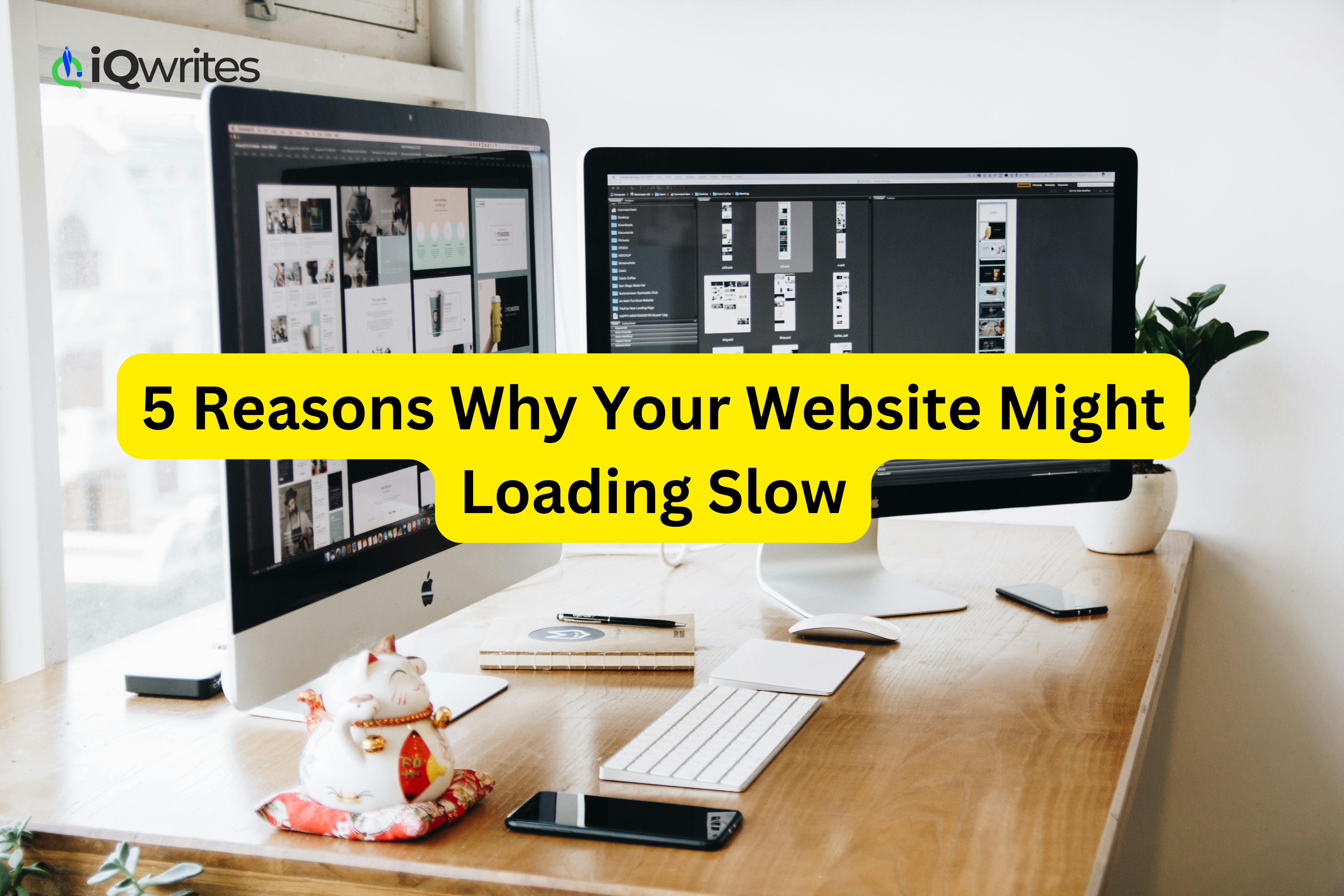In today’s fast-paced digital environment, website loading speed is crucial for user experience and SEO rankings. A slow website can frustrate visitors and lead to high bounce rates. Understanding the reasons behind slow loading times is the first step to optimizing your site. Here are five common culprits:

1. Large File Sizes
Overview
Large images, videos, and files can significantly increase the time it takes for a webpage to load. High-resolution images, in particular, are often the biggest offenders.
Solutions
- Image Optimization: Use tools like TinyPNG or ImageOptim to compress images without sacrificing quality. Aim for appropriate formats—JPEG for photos, PNG for images with transparency, and SVG for logos and icons.
- Responsive Design: Implement responsive design to serve appropriately sized images based on the user’s device. This ensures that mobile users don’t download unnecessarily large files.
- Lazy Loading: Use lazy loading techniques to delay the loading of images and videos until they are in the user’s viewport, reducing initial load times.
7 Best Free SEO Tools For 2024
2. Too Many HTTP Requests
Overview
Each element on a webpage (images, CSS files, JavaScript files) generates an HTTP request. The more requests your site makes, the longer it takes to load.
Solutions
- Combine Files: Minimize the number of requests by combining multiple CSS and JavaScript files into single files. This reduces the number of HTTP requests needed.
- Use CSS Sprites: Combine multiple images into one image file and use CSS to display only the part needed for each element. This technique reduces the number of image requests.
- Reduce External Resources: Limit the use of external scripts and stylesheets, as these can add significant loading time.
3. Unoptimized Code
Overview
Bloated or poorly structured HTML, CSS, and JavaScript can slow down your website. Extra spaces, comments, and unused code can all contribute to larger file sizes.
7 Steps To Change Your Site URL Without Losing SEO Value
Solutions
- Minification: Minify your HTML, CSS, and JavaScript files to remove unnecessary characters, which reduces file size and improves load times. Tools like UglifyJS for JavaScript and CSSNano for CSS can help.
- Clean Code: Regularly audit your code for any unused styles or scripts and remove them. A well-structured codebase is easier for browsers to process.
- Use a Content Delivery Network (CDN): CDNs can serve your files from locations closer to the user, decreasing load times and improving overall site performance.
4. Poor Hosting Service
Overview
The type of hosting service you use can have a significant impact on your website’s performance. Shared hosting, in particular, can lead to slower load times, especially during peak usage.
Solutions
- Evaluate Your Hosting Plan: If you’re on shared hosting, consider upgrading to a Virtual Private Server (VPS) or dedicated server. These options provide more resources and better performance.
- Choose a Reliable Hosting Provider: Research hosting providers known for good performance and uptime. Reviews and performance benchmarks can guide your decision.
- Use Managed Hosting: Managed hosting solutions often include optimization features and performance monitoring, which can help ensure your site runs smoothly.
5. Lack of Caching
Overview
Caching stores certain elements of your website so they don’t have to be downloaded again by returning visitors. Without caching, users must load all elements anew every time they visit, leading to longer loading times.
Solutions
- Browser Caching: Set appropriate cache headers so that browsers can store resources locally for a specified duration. This reduces load times for repeat visitors.
- Server-Side Caching: Implement server-side caching solutions, such as Varnish or Redis, to store dynamically generated content. This speeds up access to frequently requested pages.
- Use a Caching Plugin: If you’re using a CMS like WordPress, caching plugins (e.g., WP Super Cache, W3 Total Cache) can automatically handle caching for you.
Conclusion
A slow-loading website can significantly hinder user experience and affect your search engine rankings. By addressing these common issues—large file sizes, excessive HTTP requests, unoptimized code, poor hosting, and lack of caching—you can enhance your website’s performance. Regularly monitoring your site’s speed and making adjustments as necessary will ensure it remains efficient and user-friendly. Taking the time to optimize your website can lead to improved user engagement, higher conversion rates, and better overall success.

